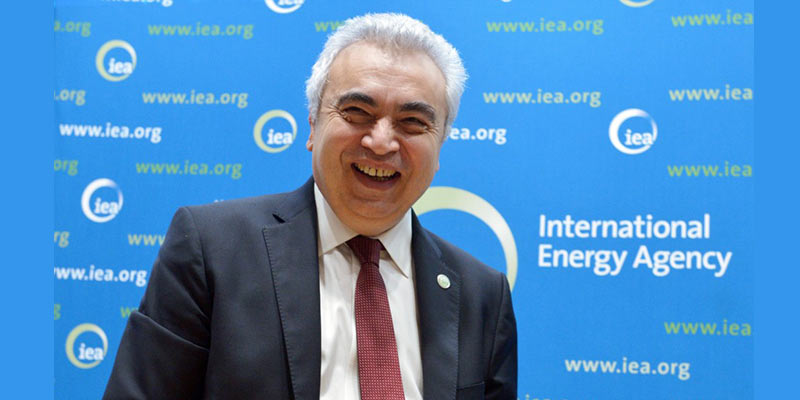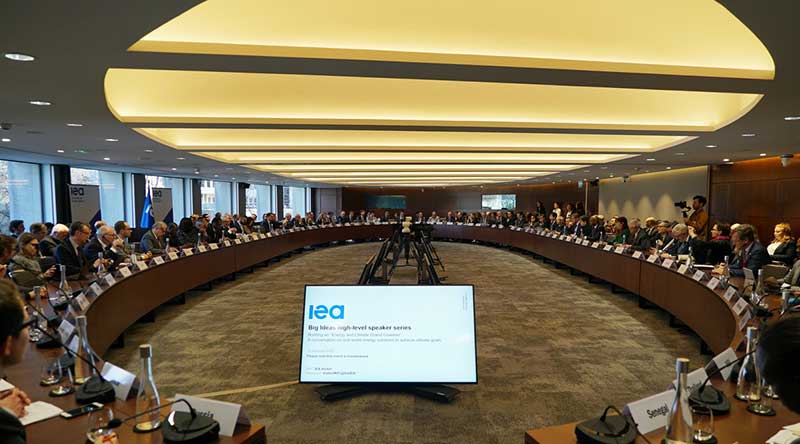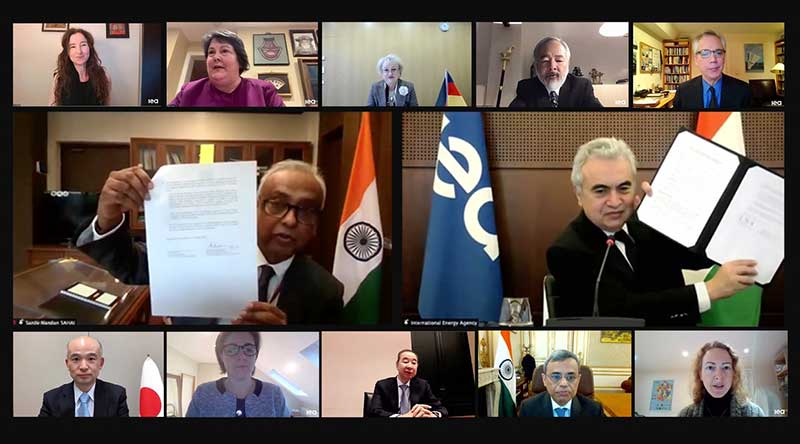- India
- Jan 28
India inks Strategic Partnership with International Energy Agency
• Within four years of the International Energy Agency (IEA) welcoming India as an Association country, IEA members and the government of India have entered into a Strategic Partnership to deepen their collaboration across a wide range of critical topics including energy security and clean energy transitions.
• The Framework for Strategic Partnership between the IEA members and the government of India was signed on January 27.
• This marks a major milestone in global energy governance that could lead to eventual IEA membership for India.
What is the role of International Energy Agency?
• The International Energy Agency (IEA) was established in 1974 within the framework of the Organisation for Economic Cooperation and Development (OECD) to implement an international energy programme.
• The IEA was born due to the 1973-1974 oil crisis, when industrialised countries found they were not adequately equipped to deal with the oil embargo imposed by major producers that pushed prices to historically high levels. This first oil shock led to the creation of the IEA in November 1974 with a broad mandate on energy security and energy policy cooperation. This included setting up a collective action mechanism to respond effectively to potential disruptions in oil supply.
• As a result, countries seeking to become members of the IEA must also be members of the OECD and hold 90 days of oil imports as commercial stocks. But over the years, the IEA’s mission has expanded substantially and today the agency is working with major economies around the world to enhance energy security and to help accelerate their clean energy transitions.
• The IEA’s collective emergency response system mechanism ensures a stabilising influence on markets and the global economy.
• Today, IEA is at the center of the global energy debate, focusing on a wide variety of issues, ranging from electricity security to investments, climate change and air pollution, energy access and efficiency, and much more.
• The basic aim of the IEA is to foster cooperation among the 30 IEA member countries and to increase energy security through energy conservation, development of alternative energy sources and energy research, development and demonstration.
• Starting in 2015, the IEA has been opening its doors to major emerging economies that are at the centre of the global conversation on energy. Since then, eight countries have joined the IEA’s Association programme: Brazil, China, India, Indonesia, Morocco, Singapore, South Africa and Thailand.
• Along with the IEA’s 30 members and the three countries formally seeking accession, this expanded IEA family now represents 75 per cent of global energy demand, up from 40 per cent in 2015.
India and IEA
• India joined the IEA as an Association country in 2017.
• India is becoming increasingly influential in global energy trends. According to the IEA’s in-depth report on India’s energy policies, which was released in January 2020, the country’s demand for energy is set to grow rapidly in the coming decades, with electricity use set to increase particularly fast. The country’s reliance on fuel imports makes further improving energy security a key priority for the Indian economy.
• The IEA and India cooperate on a wide-variety of topics, including the expansion of renewables, energy efficiency, the energy-environment nexus, oil stocks and emergency preparedness, data, investment and innovation.
• The IEA also regularly provides detailed analysis of India’s energy sector, such as a recent deep dive on decarbonising the iron and steel sector.
• Enhanced cooperation between India and the IEA will largely contribute to promoting development in various areas including global energy security, global energy governance and the use of sustainable energy resources.
• The Strategic Partnership Framework represents a new phase in the relationship between the IEA and India, the world’s third-largest energy consumer, making it the first IEA Association country to take a formal step to further advance ties with the Agency. A number of IEA members expressed their support for the big step forward.
• This partnership will lead to an extensive exchange of knowledge and it aims to strengthen cooperation in global energy security, stability and sustainability.
• The Memorandum of Understanding (MoU) was signed by power secretary Sanjiv Nandan Sahai and IEA executive director Fatih Birol.
• Through this agreement, the Indian government endeavours to take necessary steps to encourage and promote strategic and technical cooperation in the energy sector in the identified areas.
• The contents of the Strategic Partnership will be jointly decided by IEA members and India. It will include a phased increase in benefits and responsibilities for India as an IEA strategic partner, building on existing areas of work within Association and the Clean Energy Transitions Programme (CETP), such as energy security, clean & sustainable, energy efficiency, enhancing petroleum storage capacity in India, expansion of gas-based economy in India, etc.
• The IEA Secretariat will be responsible for implementation of the cooperative activities in India and for facilitating discussion between the IEA members and India to further develop the strategic partnership.
Manorama Yearbook app is now available on Google Play Store and iOS App Store



